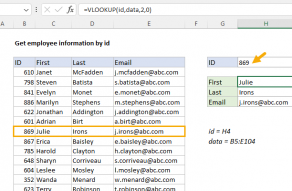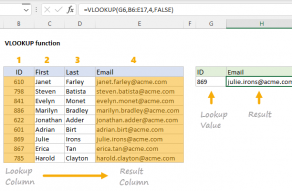Explanation
The IFERROR function is designed to trap errors and perform an alternate action when an error is detected. The VLOOKUP function will throw an #N/A error when a value isn't found.
By nesting multiple VLOOKUPs inside the IFERROR function, the formula allows for sequential lookups. If the first VLOOKUP fails, IFERROR catches the error and runs another VLOOKUP. If the second VLOOKUP fails, IFERROR catches the error and runs another VLOOKUP, and so on.
Related formulas
VLOOKUP with 2 lookup tables
VLOOKUP two-way lookup
VLOOKUP calculate grades
Get employee information with VLOOKUP
Merge tables with VLOOKUP
VLOOKUP without #N/A error
Related functions
VLOOKUP Function
The Excel VLOOKUP function is used to retrieve information from a table using a lookup value. The lookup values must appear in the first column of the table, and the information to retrieve is specified by column number. VLOOKUP supports approximate and exact...
IFERROR Function
The Excel IFERROR function returns a custom result when a formula generates an error, and a standard result when no error is detected. IFERROR is an elegant way to trap and manage errors without using more complicated nested IF statements.



















